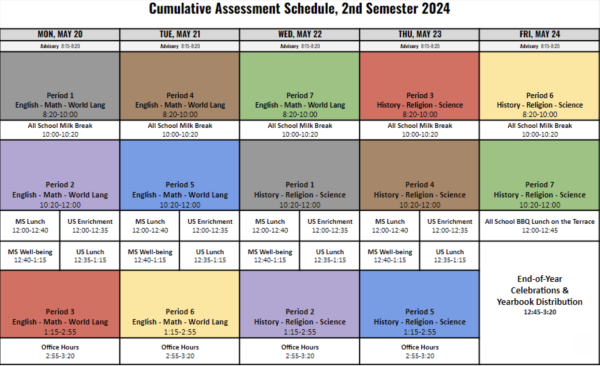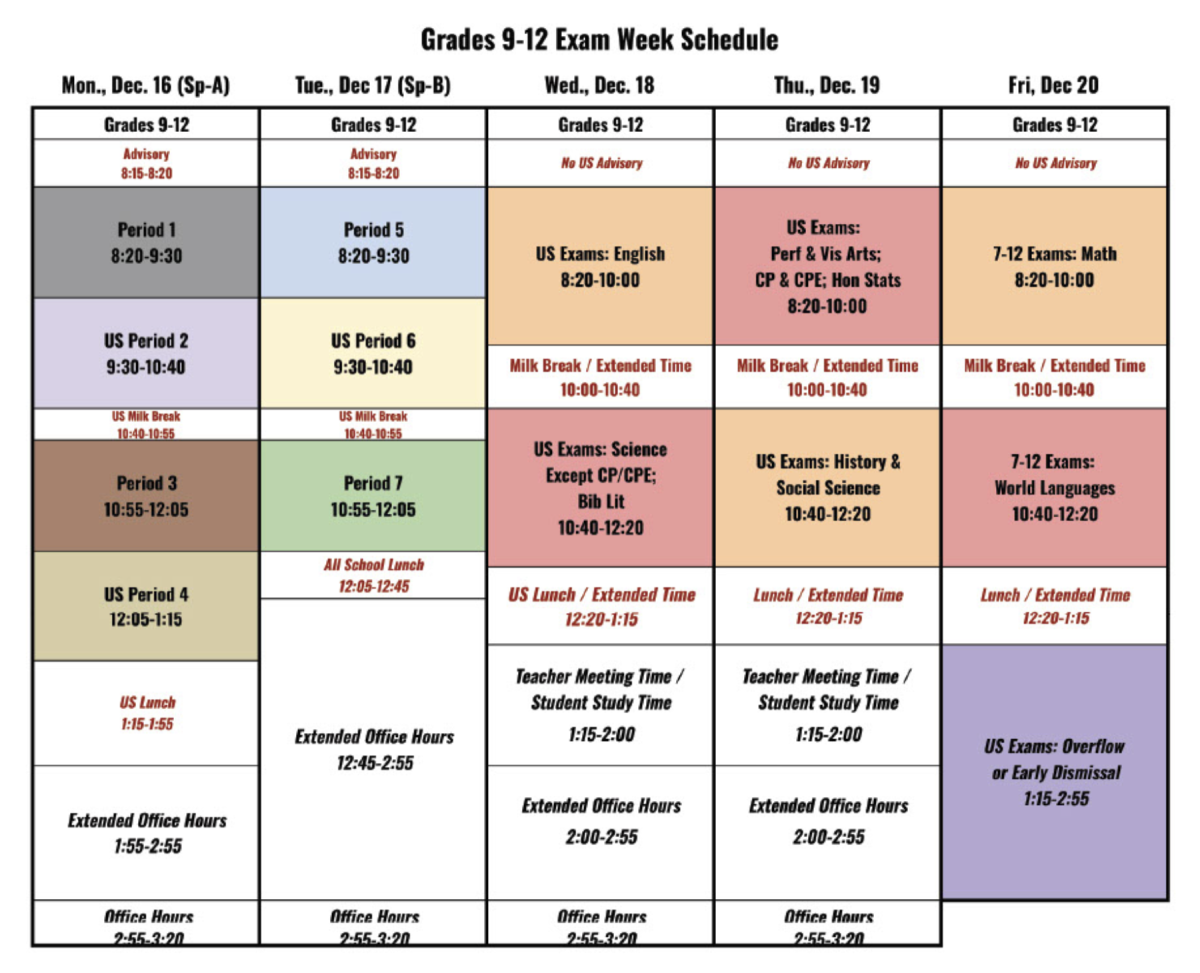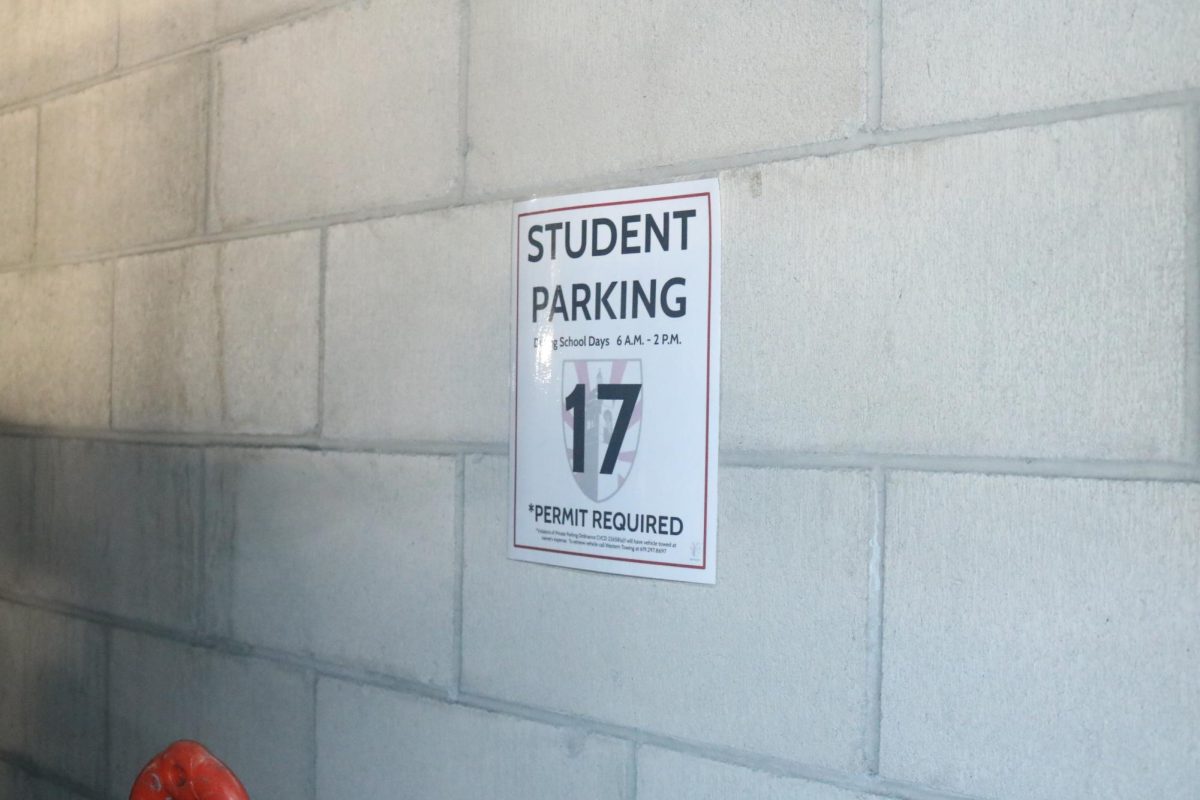Cumulatives scream “stress” to most Bishop’s students. On November 22, 2024, students received an email detailing a change made “to support student learning and well-being” during testing from Assistant Head of School for Adolescent Learning & Development Ms. Janice Murabayashi. Following two cycles of this new and improved cumulative system, our community has varying opinions on the change.
Upper school students are now not required to be on campus unless taking an exam. All sections of the same course take their exam at the same time during a designated 100-minute block. The schedule makes room for extended and regular office hours, and meals are provided by the cafeteria between testing blocks. The previous system, according to Ms. Murabayashi, was in place for eight to nine years and required students to remain on campus for all 100-minute classes, advisory, and enrichment blocks.
Ms. Murabayashi explained, “Based on the feedback from students and teachers over the years, we thought it made sense to switch to a more traditional exam week format — at least to try it for a few years and see how it goes.”
The biggest change for upper schoolers — excluding seniors with off-campus privileges — was their freedom to be off-campus when not taking exams. Grace Yao (‘26) was a junior when the new system was introduced. She explained that in the past, “I would still have to show up to classes and then just get free time in class. Well, I prefer to sleep.”
Aviva Wrosch (‘27), a sophomore last year, described this freedom as a game-changer compared to the old schedule. “The fact that you can go and do whatever you think that you need to do — that’s what I think is the biggest pro from the new cumulative schedule,” she said. Colomba Joulin-Batejat (‘27) agreed, saying, “Instead of doing nothing or the easy example of going to Brick and Bell, I’d rather either sleep in or have that extra time to study for another class.”
Ms. Murabayashi said, “We thought a lot about the experience of upper school students and what was best for them academically and emotionally. It didn’t make sense to us to force students to be on campus ‘just because.’”
Other aspects of the new cumulative system, however, may affect students differently across grades and course loads —namely, the choice to have each subject take exams at the same time. This made scheduling tests tricky.
For students taking multiple classes in the same subject, those exams would be scheduled in the same testing block. One of Aviva’s friends, Annika Mody (‘27), took both Honors U.S. History (HUSH) and Art History. On the final half-day, she made up her extra cumulative instead of participating in after-school festivities. “I feel like it could’ve been much better-scheduled because there are a lot of people who like STEM or humanities more and take more of those certain classes,” Aviva said.

While Colomba felt the new system was more “practical,” it also “made it hard” for the sophomores last year due to scheduling Honors Chemistry and HUSH on the same day in consecutive testing blocks with a twenty-minute break in between. “If you’re unlucky and have those classes, you have to cram all that the night before. Obviously, you’re not supposed to cram, but all of us were cramming all of it,” she said. “For me, those were my hardest classes. The minute I finished my Honors Chem exam, I just went to study for HUSH during the two hours.”
Jake Kim (‘26), however, found having too much time between testing blocks to be a downside of the new cumulative system. He explained, if you had two cumulatives sandwiching a “free block,” you’re “stressed because you have the next one,” but unable to “rest,” which makes the “extra block” emotionally-challenging. Balancing time in either scenario, crammed for time or dragging through free blocks, seems to be a challenge for students with two tests on one day.
Depending on luck, however, scheduling might work out drastically better. In the spring, it also depends on whether teachers give their cumulatives ahead of cumulatives week to prepare their students for AP exams. That’s why Grace had “zero cumulatives during cumulative week” her second semester. “I think it really depends on your schedule,” she said. Chance playing such a huge factor into how students allot their time and stress levels remains a con for the new cumulative schedule.
At the same time, this subject-testing strategy helped prevent academic dishonesty and promote student collaboration. “I feel like they kind of did fix [the problem of cheating]. Because now everybody’s taking it at the same time,” Colomba said.
Allowing students to study together was one intention behind this schedule change. “We can track attendance easily with this approach. It makes studying easier because … you can study with your friends and everyone is on the same timeline,” Ms. Murabayashi explained. “It also simplifies office hours for faculty and creates a fair playing field, since everyone in a given course is testing at the same time.”
Proctoring exams outside of class schedules also proved to be a challenge for students and teachers alike. Because of how many subject exams take place in the same block, teachers have to proctor exams for subjects they don’t teach.
Aviva provided her example of taking the Honors Chemistry exam with a different testing space and proctor. “If you have questions about wording or something else that you need clarification on, there’s a Spanish teacher who has no idea what’s happening with Chemistry,” she said. “I couldn’t ask a lot of the questions that I wanted to. I had to wait for 10 minutes for [Dr. Reynolds] to circle back to our classroom, which was a really big time issue.”
Spanish teacher Ms. Nicole Uhland, who proctored many exams in subjects she didn’t teach over the last two cumulative cycles, said, “I don’t mind proctoring other tests. I do think it should be distributed evenly, so that gets kind of tricky, to make sure that each teacher has the same proctoring load.” Besides that “tricky” aspect, she added, “I’m actually a fan of the cumulative schedule. I think it’s good to have that set time [for testing] with all the kids that you teach at the same time.”
Colomba found that taking her test in a different room, under a different proctor, “makes me lock in more.” For example, she took the HUSH exam with all other HUSH students in the MBR. “Even if I were in a different classroom, a lot of people are taking tests at the same time, so there isn’t noise outside of your room or anything, so I can just focus in,” she explained.
Scheduling the entire school during the new exam week is easier said than done. “We have to rebuild the schedule each semester based on faculty or course needs, so it’s a bit of a puzzle trying to fit everything in once we get that info,” Ms. Murabayashi said. One challenge is the December testing block, which is busier than May. Creating “four different schedules” for middle school and upper school is also a complicated process.
Our new cumulatives system shows great promise to transform the upper school student testing experience based on overall student feedback. Ms. Murabayashi cited the “general feedback” to be “positive,” even with “tradeoffs for both scenarios.” Given it’s still so new, both students and the administration acknowledge areas in which it could improve.
Colomba explained how balancing out the schedule based on class difficulty could also reduce stress. “If you put Spanish and HUSH, [students] will think that Spanish is less important because it’s easier for the majority of people,” she said. “So you might as well put those together. Then, like, Religion and Science together, because those are also easy and hard.”
For one, scheduling extended time students in December was “very complex,” so in May, they “adjust[ed] the timing of the testing blocks and will use that approach moving forward,” according to Ms. Murabayashi. They’re now tinkering with how to support “teachers or courses that have presentations” and “figuring out how to have a testing block and a community-wide celebration alongside yearbook distribution” on the last day of school.
Overall, many students have come to appreciate how the schedule supports their well-being and academic success, despite the inevitable stress that comes with final exams. While proctoring and scheduling created some problems last year, there are still ways for both students and administrators to problem-solve for our upcoming cumulative cycle in 2026.








